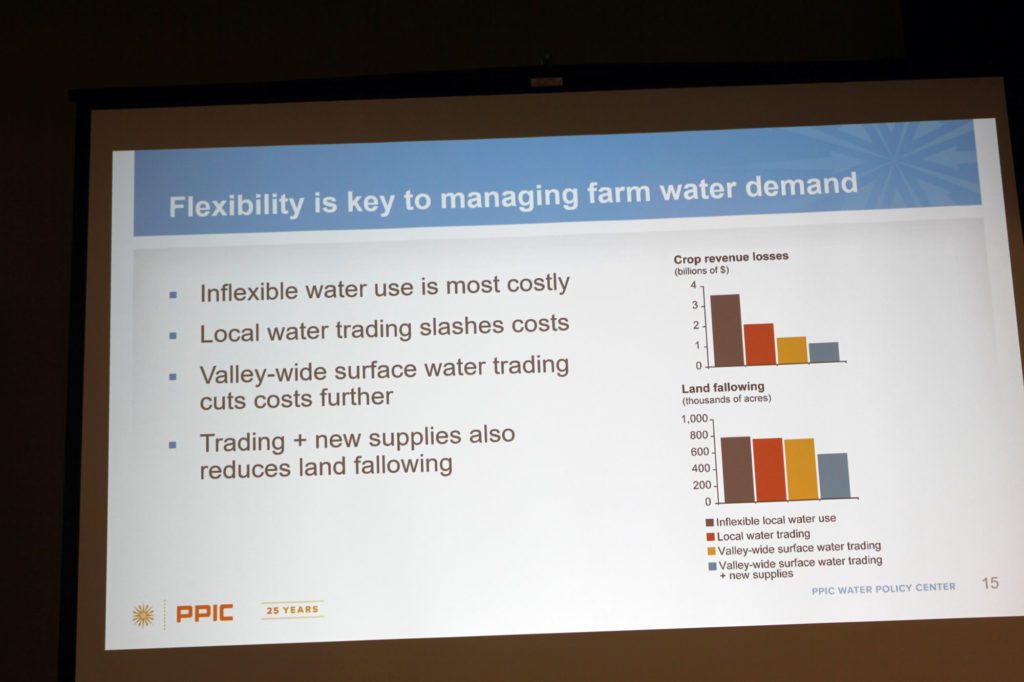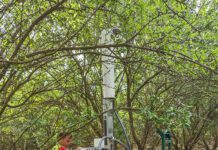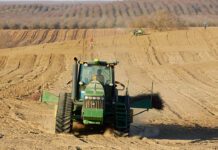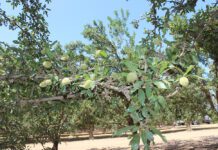California almond growers expect to shake a record 2.50 billion pounds from their trees this year according to the National Agricultural Statistics Service. This initial subjective forecast was sourced from a survey of growers who were asked to indicate their expected yields.
Richard Waycott, president and CEO of Almond Board of California said in a phone interview that the combination of a significant increase in bearing acreage plus higher yields per acre could produce an almond crop that is 8.69 percent above 2018’s 2.30 billion pound crop. Yields per acre were forecast up 50 pounds over last year. National Agricultural Statistic Service (NASS) is also reporting preliminary bearing acres for 2019 at 1.17 million acres, up 7.3 percent from last year.
“We haven’t seen production like this in a while,” Waycott said. Even though bearing acres continue to increase across the state, yields have varied. During the drought years, yields were somewhat stagnant. Last year, frost during pollination affected almond yields in some areas.
Although this year’s crop experienced some significant rainfall during bloom, it appears that the extended bloom period allowed for successful pollination it also allowed for more overlap between blooming varieties. Cooler temperatures helped minimize disease and pest pressure, but there have been reports of bacterial blast and jacket rot in some growing areas.
Looking ahead, Waycott said that as more older orchards are pushed, they are being replaced with higher density plantings, many with newer varieties which could further boost per acre yields.
California almond growers, Waycott said, still face serious challenges with water use, pest management and biomass removal, but the board’s ambitious goals give the industry focus and a timeline for improvement.
for improvement.
The 2019 NASS objective report, due on July 3, will give a more precise estimate of the crop size based on actual almond counts and measurements gathered in 850 orchards throughout the state. The report gives weights, sizes and grades of the average almond samples by both variety and growing region.












